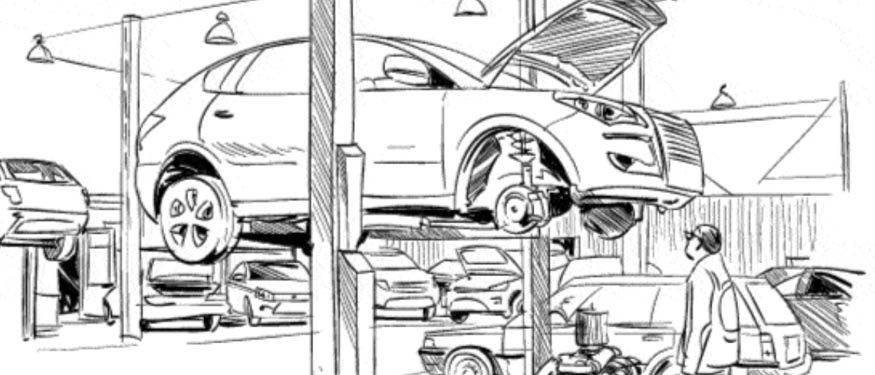In the spirit of CEE Legal Matters’s upcoming Tenth Anniversary, Fatur Menard Head of M&A Practice Lea Vatovec Miklavcic and Senica Managing Partner Uros Cop provide an evolutionary insight into the Slovenian market from a legal, economic, and business standpoint.
Strong Fundamentals
During the past ten years, the Slovenian state has been carrying out privatizations of numerous state-owned companies, Vatovec Miklavcic says. “The first companies to be privatized were coatings maker Helios, in October 2013, and medical laser maker Fotona, in January 2014, followed by car electronics maker Letrika, Ljubljana airport operator Aerodrom Ljubljana, sports equipment maker Elan, and aircraft maintenance company Adria Airways Tehnika.”
“Slovenia’s economic position is extremely strong, as we are one of the least indebted economies,” Cop chimes in. “Ten years ago, in 2013, Slovenian companies were indebted to around 40% of the GDP, or around EUR 20 billion. Today, Slovenian companies are indebted to the tune of EUR 10 billion, and the domestic economy is, therefore, one of the least indebted economies in the EU. The average indebtedness of European companies is around 40% of GDP,” he explains.
“Slovenia’s post-pandemic recovery was fast but its growth momentum in 2021 has stalled as the war in Ukraine, higher energy prices, and supply-chain bottlenecks had negative impacts on economic activity, adding to the already high inflation due to higher food and energy prices,” Vatovec Miklavcic adds. “In contrast to the previous financial crisis, when many construction companies in Slovenia declared bankruptcy, the current coronavirus pandemic has not affected the infrastructure sector to the same extent as other sectors. Public infrastructure projects in Slovenia are currently on the rise, with the second 27.1-kilometer railway line between Koper and Divacia, the third development axis (road), and the Karavanke Tunnel’s second pipe the major projects currently in the construction phase,” she elaborates.
“The future is bright, as the Slovenian economy is highly diversified,” Cop posits. “The only serious threat I see in the next ten years is the aging of the population, where, although it is a global problem, Slovenia is in a somewhat worse position than the other EU member states.” Still, according to him, this problem is quite solvable. “I see the solution in investing in innovation and the development of new technologies that will solve, or at least alleviate Slovenia’s poor demographic situation,” he stresses. “We need to be aware that Slovenian companies have good foundations for growth and innovation, as we are now ten years into a period of economic growth, even though we are sailing into uncertain times.”
Banking Sector Overhaul
“Since becoming a member of the European Union in 2004, Slovenia endured a mostly steady economic performance which was hampered by the financial crisis in 2008 and 2014,” Vatovec Miklavcic reports. In this period, Slovenia was hit by a “deep recession and faced a severe banking crisis, driven by excessive credit growth, poor risk assessment, and insufficiently effective supervision tools, which led to unsustainable debt build-up in (largely state-owned) banks and the corporate sector.” As she explains, the “major state-owned banks, NLB, Nova KBM Bank, Abanka, Factor Banka, and Probanka, were recapitalized in 2013, and part of their non-performing loans have been transferred to the Bank Asset Management Company in 2014.” The BAMC, established in 2013 to “ring-fence impaired assets,” ceased to exist at the end of 2022, when “around half of billion euros worth of its assets were transferred to the Slovenian Sovereign Holding.”
Furthermore, the Slovenian banking and investment sector has undergone “significant consolidation in the past couple of years,” Vatovec Miklavcic notes. “In 2016, Nova KBM was sold to Apollo Global Management and the EBRD, while in 2019 Apollo acquired Abanka, which consequently merged with Nova KBM. In 2021, Hungary’s OTP Bank, owner of SKB Banka, acquired Nova KBM, while NLB acquired the Slovenian Sberbank subsidiary in November 2021.”
The Balkan Gem
“Ten years ago, in comparison to other countries in the Adria region, Slovenia was often considered one of the most successful emerging market-oriented new economies among Central and Eastern European countries,” Vatovec Miklavcic says. “Due to its investment climate, skilled workforce, stable business environment, and reliable legal system, Slovenia was seen as a possible base for companies from the eurozone countries eager to expand into the Balkan region. In recent years, however, we are noticing Croatia sparking more interest since it is located at the heart of the Balkans and is seen as the natural jumping-off point for companies considering expansion in the region,” she expands.
Cop agrees, stating that, “in recent years, Slovenia has lost its historic status as a gateway to the Western Balkans somewhat – due to Croatia’s accession to the EU and the accession status given to some of the Western Balkans countries. This has opened the door to a wider market, which other member states have made good use of and, in a sense, have pushed Slovenia out of this position,” he says. Still, Cop does stress that it is important not to forget that “the loss of this status is merely the possession of a wider market. A great deal of the blame also lies with us, and I am referring to our lack of action and our inappropriate, perhaps even haughty, attitude towards the Western Balkans. Nevertheless, I note that Slovenia has also matured on this issue and is now slowly regaining its title of gateway to the region.”
Still the Smart Bet
Indeed, the country appears to be in excellent shape. Vatovec Miklavcic notes that “the M&A sector is quite active, particularly in comparison to 2020, when most transactions were either stopped or put on hold. Takeover activity was extremely dynamic, even compared to the financial crisis about a decade ago – nevertheless, state ownership persists in inherently competitive sectors such as tourism,” she says, citing as an example the sale of a 43% equity stake in Sava Turizem to Prestige, a company backed by Hungarian asset manager Diofa Asset Management, which was “halted due to exercise of a pre-emptive right by the state.”
Finally, Vatovec Miklavcic notes that “Slovenia is an important player in the field of technological development and new technologies. Slovenia has already established itself as a leading country in the field of blockchain technologies, through companies such as Bitstamp, Iconomi, Eligma, and Blocksquare, and we expect further developments in this field in the future through the growth of existing companies and the entry of new market players,” she posits.
To boot, she says that further real estate market developments are to be expected, with the past few years showing “a major growth in the logistics sector. There is also a high demand for business and residential buildings in the capital and throughout Slovenia, and in the last couple of years there have been several major infrastructure projects, while many more are still in development,” Vatovec Miklavcic points out.
This article was originally published in Issue 10.2 of the CEE Legal Matters Magazine. If you would like to receive a hard copy of the magazine, you can subscribe here.














